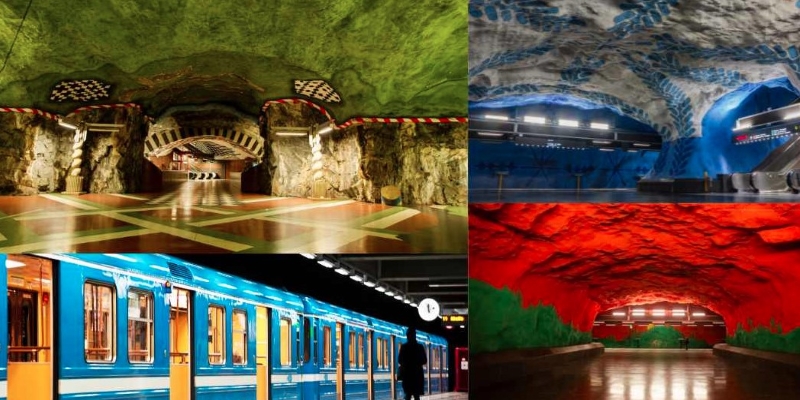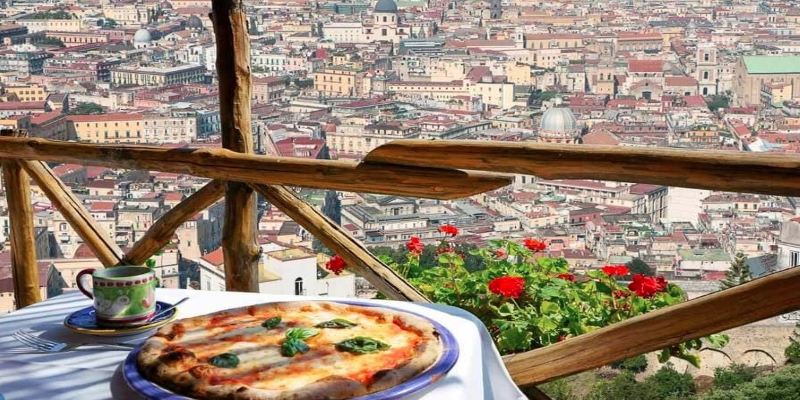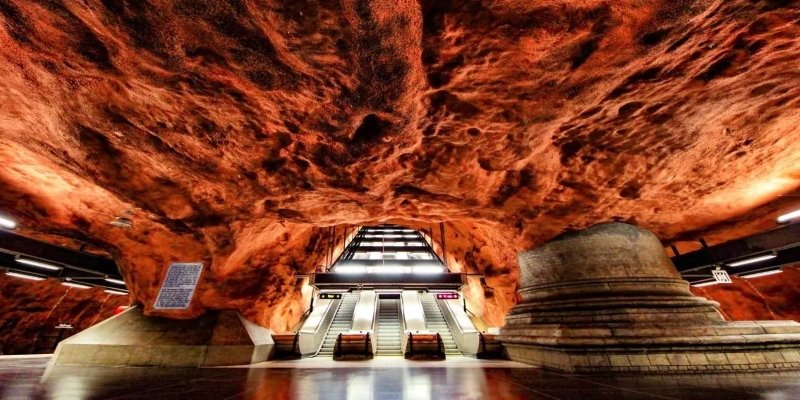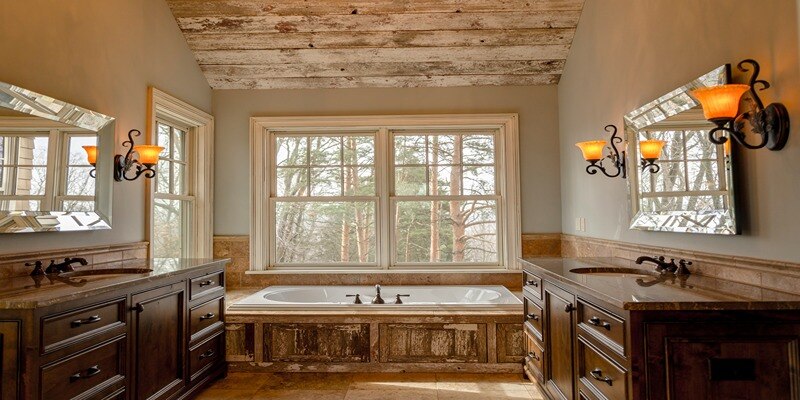Welcome to Stockholm, where the train stations do more than just serve as points of transitthey transport you into a realm that feels straight out of a fairy tale. As you step off the train, you might find yourself wondering if you've walked into an art gallery, a natural cavern, or a futuristic hub. This isn't by accident; it's by design. Stockholm's subway system is renowned for its striking architecture and immersive art, making each station a destination in its own right.
In this exploration, we uncover how the blend of visionary design, artistic brilliance, and a touch of nature's magic makes traveling through these stations a uniquely enchanting experience. Let's delve into the elements that transform routine commutes into extraordinary journeys.
Stockholm's train stations are a testament to Sweden's commitment to combining functionality with breathtaking design. Each station presents its own story, crafted not just for transit but as a public space meant to inspire and engage. The architectural styles range from modern minimalism to organic forms that appear carved directly from the earth.
The visionary architects behind Stockholm's metro have pushed the boundaries of traditional public infrastructure design. Stations like Solna, with its sweeping lines and ambient lighting, feel more like futuristic galleries than parts of a transit system. On the other hand, Tekniska Hgskolan station, inspired by technology and education, features mathematical symbols and scientific motifs integrated into its decor, celebrating Swedens rich scientific heritage.
Some stations, such as Kungstrdgrden, are steeped in history, displaying relics and artifacts found during their construction. This station, located at the end of the Blue Line, is a literal underground museum where the old blends with the new, creating a dialogue between Stockholm's past and present. The station's design incorporates elements from a former palace garden above, including antique sculptures and intricate tile work, encapsulating the city's historical layers.

Designers of stations like Stadion have embraced the surrounding environment, allowing the natural rocky terrain to dictate the design. The station's vibrant blue and white color scheme complements the nearby stadiums and is a nod to Sweden's national colors. This integration not only preserves the natural landscape but also reduces the environmental impact of construction.
Every station uniquely balances artistic flair with practical functionality. T-Centralen, the heart of Stockholm's metro system, serves as a prime example. Its blue and white motifs, designed by artist Per Olof Ultvedt, transform functional elements like escalators and platform seats into works of art. This not only enhances the aesthetic appeal but also improves navigability and the overall commuter experience.
Stockholm's subway, stretching over 110 kilometers, serves as a public art gallery. Each station, uniquely adorned with artworks ranging from mosaics and sculptures to modern installations, not only beautifies transit spaces but also makes art accessible to all, enriching daily commutes.

Art in these stations spans historical and contemporary themes. Kungstrdgrden station, for instance, integrates relics from Stockholms aristocratic past, while Solna Centrum station features vivid murals reflecting Swedish societal themes.
TheSubwayy art is dynamic and continuously updated with new pieces to keep the environment stimulating and reflective of diverse artistic voices. Regular art tours enhance the educational value of these displays, providing insights into the artwork and artists.
Stockholms subway brings art into everyday life by making it freely accessible to everyone. Instead of being confined to museums, diverse artworks are woven into public spaces, reaching people from all backgrounds. This inclusive approach turns daily commutes into enriching cultural experiences, fostering a shared sense of community and broader cultural appreciation across the city.
Stockholm's train stations are marvels of design that seamlessly integrate natural elements, enhancing their ethereal ambiance and reflecting Sweden's profound respect for nature. Stations like Stadion and Tekniska Hgskolan stand out with their exposed rock surfaces, left undisturbed and incorporated into the overall design, showing off raw geological beauty. These stations use organic materials and natural motifs, which not only minimize environmental impact but also create a serene, calming atmosphere for travelers.
The use of natural light is maximized wherever possible, reducing energy consumption and illuminating the stations in a way that changes with the time of day and seasons, connecting riders to the natural world outside. This thoughtful integration of nature into urban spaces exemplifies how public infrastructure can enhance environmental consciousness and aesthetic appreciation simultaneously, making each commute a reminder of the beauty and importance of the natural environment.
Technology plays a significant role in amplifying the otherworldly experience of Stockholm's train stations. Advanced lighting systems, for instance, are strategically designed to highlight architectural details and artworks and create immersive environments that change the mood of a space instantly. Stations like Odenplan use dynamic lighting that adapts to natural light cycles, subtly shifting throughout the day to mimic daylight patterns. This careful lighting design not only enhances visual appeal but also creates a more pleasant environment, particularly during Sweden's long, dark winters.
Interactive digital displays and motion-responsive installations further enhance the experience. Some stations feature screens that respond to passenger movement, creating a sense of interaction between the traveler and the space. This blend of technology and artistry not only entertains but also makes these stations feel alive and responsive, bridging the gap between traditional art and modern digital engagement.
Stockholm's train stations stand out as much more than mere transit hubs. They are places where art, architecture, and advanced technology converge with Swedish cultural values to create a series of spaces that feel otherworldly yet accessible. For travelers and locals alike, these stations offer a glimpse into a world where public transport is not just about moving from one point to another but is an integral part of the city's cultural fabric. This unique blend of elements ensures that the charm of Stockholms train stations continues to enchant all who pass through them.

By Juliana Daniel/Sep 04, 2024

By Paula Miller/Sep 03, 2024

By Triston Martin/Aug 26, 2024

By Nancy Miller/Jul 29, 2024

By Celia Shatzman/Aug 31, 2024

By Gabrielle Bennett /Sep 02, 2024

By Tessa Rodriguez/Sep 04, 2024

By Juliana Daniel/Nov 05, 2024

By Georgia Vincent/Aug 28, 2024

By Martina Wlison/Aug 30, 2024

By Triston Martin/Aug 29, 2024

By Maurice Oliver/Aug 31, 2024